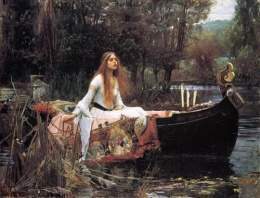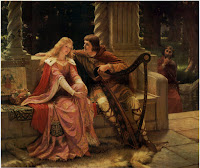- What can I do now that I couldn't do before?
- I can read mora fast and I can understand better the texts.
- What do I like most?
- the dialogues with my partner.
- What do I do well?
- I think my pronunciation is god.
- What am I confused about?
- with the tenses.
- What do I need help with?
- I think I need help whit the listenings.
- What do I do in English outside the class?
- do the homework.
- What do I need to improve?
- I need to improve my blog.
- What did I learn about culture?
- I learn about St.Patrick.
viernes, 22 de marzo de 2019
SELF EVALUATION
miércoles, 20 de marzo de 2019
VOCABULARY UNIT 3-4
Pleased : satisfecho
Net : red
Earn: cobrar
Thum: pulgar
Flu: gripe
Flu: gripe
Chest : pecho
Toe : dedo del pie
Toe : dedo del pie
Fossil fuels :
combustibles fósiles
martes, 12 de marzo de 2019
1. What period does the middel ages cover ?
It's from the middel of the Roman empire to to the discivery of America.
2. What general charactheristics does ir have, according to the teachers comments.
There are a lots of stiles, but we don't know all of them.
3. What is the main difference between "troubadours" and "minstrels".
The troubadours were poets and musicians, they composed his songs and they interpreted them.
4. Pay attention to these two monuments ( a romanic church and a gothic cathedral) what do their different heights have in common with the music evolution of those centuries ?
The first ( romanic ) has very small arcs.
And the second ( gothic ) has large and hight arcs.


5. What do you feel looking at these pictues ( taken from the 19th century but directly linked to the Middel Ages ) in your own opinion, what kind of music could accompany these images ?
This pictures are so beautifull, they represented very good.



6. Why does heavy metal music love this asthethic ?
Becouse is very dark and loud.
:format(jpeg):mode_rgb():quality(90)/discogs-images/R-1992917-1257286845.jpeg.jpg)


It's from the middel of the Roman empire to to the discivery of America.
2. What general charactheristics does ir have, according to the teachers comments.
There are a lots of stiles, but we don't know all of them.
3. What is the main difference between "troubadours" and "minstrels".
The troubadours were poets and musicians, they composed his songs and they interpreted them.
4. Pay attention to these two monuments ( a romanic church and a gothic cathedral) what do their different heights have in common with the music evolution of those centuries ?
The first ( romanic ) has very small arcs.
And the second ( gothic ) has large and hight arcs.


5. What do you feel looking at these pictues ( taken from the 19th century but directly linked to the Middel Ages ) in your own opinion, what kind of music could accompany these images ?
This pictures are so beautifull, they represented very good.



6. Why does heavy metal music love this asthethic ?
Becouse is very dark and loud.
:format(jpeg):mode_rgb():quality(90)/discogs-images/R-1992917-1257286845.jpeg.jpg)

YOU ARE WHAT YOU EAT:
- BREAKFAST: I ate juice with biscuit.
- BREAK: nothing.
- LUNCH: For main course soup with sausages and then a yougurt.
- SNACK: a sandwich of nocilla.
- DINNER: fish.
I HAVE TO CHANGE:
I have to eat more fruit and vegetables.
VOCABULARY MUSIC II:
Musical meaning: significado musical. Dot: puntillo.
Rhythm: ritmo. Ligature: ligadura.
Dot: puntillo. Snare drum: caja.
Drums: batería. Clap: palmada.
Bar: compás (el espacio del pentagrama). Orchestra: orquesta.
Time signature: compás (la fracción numérica). Conductor: director.
Tempo: "tempo". Ensemble: formación musical.
Chordophone: cordófono. Aerophone: aerófono.
String: cuerda. Bow: arco.
Rub: frotar. Pluck: pulsa, puntear.
Guitar pick: púa. Viola: viola.
Violoncello: violonchelo. Double bass: contrabajo.
Tuning peg: clavija. Harp: arpa.
Brass: viento metal. Woodwind: viento madera.
Mouthpiece: boquilla. Saxophone: saxofón.
Oboe: oboe. Clarinet: clarinete.
Trumpet: trompeta. French horn: trompa.
Percussion: percusión. Amplifier: amplificador.
Soprano: soprano. Mezzo-soprano: mezzo-soprano.
Tenor: tenor. Baritone: barítono.
Grand piano: piano "de cola". Kettle drum: timbal.
READING BOOK TUTANKHAMUN:
CHAPTER 7:
- was over: habia acabado.
- afterlife: vida despues de la muerte.
- treasures: tesoros.
- bury: enterrar.
- locked: cerrado.
CHAPTER 8:
- pain: dolor.
- baldy injured: estado muy mal.
CHAPTER 9:
- wooden casket: casco de madera.
- mummy: momia.
CHAPTER 10:
- damage: saboteo.
- lead: guiar.
CHAPTER 11:
- didn't trust him: no le engaño.
- truth: verdad.
-guests: invitados.
CHAPTER 12:
- missed: extrañar.
- was over: habia acabado.
- afterlife: vida despues de la muerte.
- treasures: tesoros.
- bury: enterrar.
- locked: cerrado.
CHAPTER 8:
- pain: dolor.
- baldy injured: estado muy mal.
CHAPTER 9:
- wooden casket: casco de madera.
- mummy: momia.
CHAPTER 10:
- damage: saboteo.
- lead: guiar.
CHAPTER 11:
- didn't trust him: no le engaño.
- truth: verdad.
-guests: invitados.
CHAPTER 12:
- missed: extrañar.
UNIT 4: future tenses.

WILL:
- I will be a teacher.
- I won't have a dog.
BE GOING TO:
- I am going to read this book.
- I am going to sleep.
READING BOOK TUTANKHAMUN.
CHAPTER 1 :
- bow and arrow: arco y flecha.
- frightened: asustado.
- chef advisor: consejero jefe.
- chariots: carrozas.
- pulled: empujados.
CHAPTER 2:
- excitement: emocionado.
- waved : saludar.
- anthem: himno.
- speeches: discursos.
- performed: actuaron.
- archery: tiro con arco.
CHAPTER 3:
- wrestling: lucha libre.
- luxurius: lujosa.
- weak: debil.
CHAPTER 4:
- trainer: entrenador.
- ground: suelo.
- embarrassed: avergozado.
- fair: justo.
- ill: enfermo.
CHAPTER 5:
- bride:boda.
- fan: avanico.
- proud: orgulloso.
CHAPTER 6:
- brave: valiente.
- bow and arrow: arco y flecha.
- frightened: asustado.
- chef advisor: consejero jefe.
- chariots: carrozas.
- pulled: empujados.
CHAPTER 2:
- excitement: emocionado.
- waved : saludar.
- anthem: himno.
- speeches: discursos.
- performed: actuaron.
- archery: tiro con arco.
CHAPTER 3:
- wrestling: lucha libre.
- luxurius: lujosa.
- weak: debil.
CHAPTER 4:
- trainer: entrenador.
- ground: suelo.
- embarrassed: avergozado.
- fair: justo.
- ill: enfermo.
CHAPTER 5:
- bride:boda.
- fan: avanico.
- proud: orgulloso.
CHAPTER 6:
- brave: valiente.
Suscribirse a:
Comentarios (Atom)